Papers by Alexandra Nakou
Η εμπειρία μιας online εκπαίδευσης κατά τη διάρκεια της πανδημίας Covid-19: Δουλεύοντας εξ αποστά... more Η εμπειρία μιας online εκπαίδευσης κατά τη διάρκεια της πανδημίας Covid-19: Δουλεύοντας εξ αποστάσεως ψηφιακές αφηγήσεις με εκπαιδευτικούς σε τρία νησιά της Ελλάδας
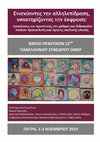
Βιώνοντας τη Δημοκρατία στο Νηπιαγωγείο, 2019
Η παρούσα εργασία παρουσιάζει τα αποτελέσματα της συμμετοχικής έρευνας-δράσης και των εκπαιδευτικ... more Η παρούσα εργασία παρουσιάζει τα αποτελέσματα της συμμετοχικής έρευνας-δράσης και των εκπαιδευτικών δράσεων δύο δημόσιων νηπιαγωγείων της Αττικής με στόχο την εισαγωγή των παιδιών στην έννοια της δημοκρατίας και του «πολίτη» μέσα από βιωματικές δράσεις ενίσχυσης της συμμετοχή τους στο σχολικό γίγνεσθαι. Στο αναλυτικό πρόγραμμα του νηπιαγωγείου η έννοια και η σημασία της δημοκρατίας διαχέεται στα γνωστικά αντικείμενα, ενώ παράλληλα μορφοποιείται σε πρακτικές που ισχυροποιούν και διαμορφώνουν τις σχέσεις μεταξύ των μελών της ομάδας-τάξης αλλά και του σχολείου- κοινωνίας. Δραστηριότητες όπως το συμβούλιο τάξης, οι εκλογές και οι ψηφοφορίες για θέματα που άμεσα αφορούν μαθητές και μαθήτριες, η
οπτικοποίηση και η προώθηση των αιτημάτων τους στην τοπική αυτοδιοίκηση, θα οδηγήσουν τα παιδιά στη σταδιακή διαμόρφωση της έννοιας της κοινότητας οδηγώντας στη μεταμόρφωση της
τάξης από σύνολο ατόμων σε κοινότητα προσώπων. Η σχολική κοινότητα αναπτύσσεται και αλληλεπιδρά με συγκεκριμένα εργαλεία δημοκρατικού διαλόγου που τη βοηθούν να διεκδικεί και να διαμορφώνει μία νέα συλλογική ταυτότητα. Κατά την υλοποίηση αυτής της έρευνας- δράσης οι εκπαιδευτικοί προκειμένου να αξιολογήσουν τα αποτελέσματα αυτής, χρησιμοποιούν μία σειρά εργαλείων όπως: το ημερολόγιο της δράσης με σχόλια, παρατηρήσεις και καταγραφή
των δράσεων καθώς και το διάλογο και τη συζήτηση με τους μαθητές/τριες προκειμένου να καταγραφεί η οπτική τους. Συνοψίζοντας, θα λέγαμε πως η άσκηση των δημοκρατικών πρακτικών εξασφαλίζει την εσωτερίκευση εκείνων των αξιών και των συμπεριφορών που θα
καταστήσουν τα παιδιά τους αυριανούς ευσυνείδητους πολίτες.
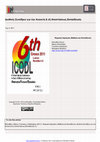
Storytelling is present in all human activities throughout history. Part of the oral or written t... more Storytelling is present in all human activities throughout history. Part of the oral or written tradition storytelling, along with language, consist basic cultural procedures. Digital culture praises storytelling through different means of communication. Movies, the news, advertising, web pages present their content in a storytelling form. Digital storytelling is used in two different meanings, as an interactive experience, and also as a movement which defined digital storytelling as a narrated piece of personal writing, still images, video and musical soundtrack. Educational digital storytelling is offering new ways to communicate ideas and examples of good-practices integrating digital storytelling in education are leading the way. The Laboratory of New Technologies in Communication, Education and the Mass Media acknowledges digital storytelling as an emerging field of study and focuses into research projects that develop from theory to practice. One of the accomplishments is the ...
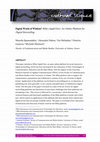
Cultural Science Journal, Oct 31, 2015
This paper introduces Milia (AppleTree), an open online platform for social interactive digital s... more This paper introduces Milia (AppleTree), an open online platform for social interactive digital storytelling, which has been developed by the Laboratory of New Technologies in Communication, Education and the Mass Media, with the support of the University Research Institute of Applied Communication (URIAC) of the Faculty of Communication and Media Studies of the University of Athens. The Milia platform aims to support the representation, presentation and collaborative creation of any sort of stories in digital format. Applications of the platform can be found in storytelling per se, in education, in publishing and, more generally, in the creation and publication of collaborative digital works. The first part of the paper is focused on a state of the art review for digital storytelling platforms and discussion of some major challenges that these platforms are attempting to face. This review is followed by a second part, which discusses the technical features and functional capabilities of the Milia platform in detail, and a third part, which reports on applications of the platform that have already been realized and digital stories that are already available online. The paper is concluded with a discussion of limitations and directions of future work for the Milia platform.
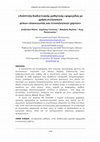
2ο Πανελλήνιο Συνέδριο Ημαθίας «Ψηφιακές και Διαδικτυακές εφαρμογές στην Εκπαίδευση: Ανάπτυξη διαδικτυακής μαθητικής εφημερίδας με χρήση συλλογικών μέσων επικοινωνίας και εννοιολογικών χαρτών, 2010
Η καταιγιστική και «πληθωρική» από πλευράς προσφοράς, χρόνου και
δυνατοτήτων, παρουσία των Μέσων ... more Η καταιγιστική και «πληθωρική» από πλευράς προσφοράς, χρόνου και
δυνατοτήτων, παρουσία των Μέσων Μαζικής Επικοινωνίας στην
καθημερινότητα μας καθώς και ο σημαντικός ρόλος που αυτά έχουν
αναλάβει σε κάθε έκφρασή τους (διαδίκτυο, τηλεόραση, κινηματογράφος, Τύπος, ραδιόφωνο, περιοδικά, κ.ά.) αποτελεί φαινόμενο που απαιτεί την προσοχή των φορέων διαπαιδαγώγησης, ώστε να αξιοποιήσουν αυτόν τον δίαυλο επικοινωνίας ξεκινώντας από την παιδική ηλικία. Η ενασχόληση με τα προϊόντα των νέων μέσων, όπως παιχνίδι με διαφημίσεις, άρθρα, φωτογραφίες δημοσιογραφικών εντύπων ή ειδήσεων από blog και ιστοσελίδες αναπτύσσουν ανάμεσα στο παιχνίδι και στον γραμματισμό δυναμικές σχέσεις (Bessell- Brown 1985).
Σε αυτήν την εργασία θα αναλυθεί η πορεία ανάπτυξης ψηφιακής
σχολικής εφημερίδας με ομαδοσυνεργατικό τρόπο από παιδιά της Στ΄
Δημοτικού. Χρησιμοποιηθήκαν οι γνωστότερες υπηρεσίες του Web 2.0 όπως wiki, chat, αλλά και λογισμικό εννοιολογικής χαρτογράφησης σε συνδυασμό με παιγνιώδεις εφαρμογές σε flash, ώστε τα παιδιά να εξοικειωθούν με τα κοινωνικά δίκτυα, αλλά και να καλλιεργήσουν δεξιότητες ψηφιακού γραμματισμού.
ISBN: 978-960-99301-0-9

The University Research Institute of Applied Communication (U.R.I.A.C.) and the New Technologies ... more The University Research Institute of Applied Communication (U.R.I.A.C.) and the New Technologies Laboratory in Communication, Education and the Mass Media (N.T.L.C.E.M.) have been carrying out a number of research projects in the field of Intergenerational Communication and Learning. Members of community centres for the elderly and public high school students have participated in the projects focusing on the social need for intergenerational communication. This paper presents the projects held, as well as their research goals and the conclusions the research team has arrived at. There were two key factors, common in all projects, which outline the chosen approach and contribute to the uniformity and concreteness of the conclusions: firstly, in all cases the intergenerational communication took place in an composite environment which offered online and offline interaction at the same place and time, and, secondly, all activities were designed in a way which promotes the idea that the elderly may not only benefit from ICT, but become active members of the new digital world and provide precious knowledge and experience in both local and global level. During the first research project 14 year-old students acted as tutors of the members of a community centre teaching them basic aspects of internet use. One year later another project was held, bringing together adolescents and elderly people in order for them to co-create digital videos based on the personal narrations of the elderly and implementation of the technical skills of the adolescents. As the elderly revealed their life experiences the students recorded them on video. They cooperated on the editing process and presented the final outcome to all participants. Social games and intergenerational learning was the main theme of the third workshop. High school students played the popular game "Frontier ville" with their elderly teammates and participated in an online competition. A hands-on workshop was set whilst both generations grew their digital farm in the far-west. The fourth research project was called "Music for Two Generations", and was based on the hypothesis that both sides would be interested in discussing their musical tastes. Students and seniors used "every-day" digital applications, under the guidance of the research group members, in order to create a youtube account where they composed a playlist with their favourite songs. A general conclusion deriving from these projects would be that people from different generations can work together and communicate in a well-organized digital context. Moreover, they can create valuable digital artifacts as a confirmation of their cooperation and interaction achieved.
Τα Πρακτικά του 5ου Συνεδρίου: «Νέος Παιδαγωγός» Αθήνα, 28 και 29 Απριλίου 2018, 2018
Βασικό ζητούμενο της εποχής μας είναι η δημιουργία ενός ανοικτού στην κοινωνία σχολείου, το οποίο... more Βασικό ζητούμενο της εποχής μας είναι η δημιουργία ενός ανοικτού στην κοινωνία σχολείου, το οποίο θα πρέπει να έχει τη δυνατότητα να αλληλεπιδρά με αυτή μέσα από μία συμμετοχική και διαλλακτική σχέση. Πρόκειται για μια σχετικά νέα αντίληψη όσον αφορά στο ρόλο της σχολικής μονάδας, η οποία έχει ως αποτέλεσμα η διαδικασία της μάθησης να διαπερνά το φυσικό της χώρο και να διαχέεται στη ζωή της γειτονιάς, της περιοχής, της πόλης. Στην παρούσα εισήγηση γίνεται αναφορά στον τρόπο εξοικείωσης παιδιών προσχολικής εκπαίδευσης με την έννοια της πολιτειότητας μέσα από δραστη-ριότητες ενίσχυσης της συμμετοχικότητας τους στο ευρύτερο τοπικό και κοινωνικό πε-ριβάλλον. Δραστηριότητες που προάγουν μία δημοκρατική παιδεία μέσα στην τάξη και επέκταση με εφαρμογή αυτών στην καθημερινότητα.
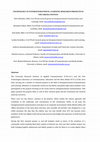
Meliadou, E., Nakou, A., Koutsikos, L., Giannakoulopoulos, A., Gkouscos, D. & Meimaris, M. (2012) "Technology in intergenerational learning research projects in the greek context", to appear in the 3rd International Conference on the Elderly & New Technologies, April 2012, Castellón, Spain. , Apr 2012
The University Research Institute of Applied Communication (U.R.I.A.C.) and the New Technologies ... more The University Research Institute of Applied Communication (U.R.I.A.C.) and the New Technologies Laboratory in Communication, Education and the Mass Media (N.T.L.C.E.M.) have been carrying out a number of research projects in the field of Intergenerational Communication and Learning. Members of community centres for the elderly and public high school students have participated in the projects focusing on the social need for intergenerational communication. This paper presents the projects held, as well as their research goals and the conclusions the research team has arrived at.
There were two key factors, common in all projects, which outline the chosen approach and contribute to the uniformity and concreteness of the conclusions: firstly, in all cases the intergenerational communication took place in an composite environment which offered online and offline interaction at the same place and time, and, secondly, all activities were designed in a way which promotes the idea that the elderly may not only benefit from ICT, but become active members of the new digital world and provide precious knowledge and experience in both local and global level.
During the first research project 14 year-old students acted as tutors of the members of a community centre teaching them basic aspects of internet use. One year later another project was held, bringing together adolescents and elderly people in order for them to co-create digital videos
based on the personal narrations of the elderly and implementation of the technical skills of the adolescents. As the elderly revealed their life experiences the students recorded them on video. They cooperated on the editing process and presented the final outcome to all participants. Social games and intergenerational learning was the main theme of the third workshop. High school students played the popular game “Frontier ville” with their elderly team-mates and participated in an on-line competition. A hands-on workshop was set whilst both generations grew their digital farm in the far-west. The fourth research project was called “Music for Two Generations”, and was based on the hypothesis that both sides would be interested in discussing their musical tastes. Students and seniors used “every-day” digital applications, under the guidance of the research group members, in order to create a youtube account where they composed a playlist with their favourite songs. A general conclusion deriving from these projects would be that people from different generations can work together and communicate in a well-organized digital context. Moreover, they can create valuable digital artifacts as a confirmation of their co-operation and interaction achieved.
The new shift to more “creative” methods in media research that employ visual means of representa... more The new shift to more “creative” methods in media research that employ visual means of representations interests the most the discipline of education (Buckingham,D.2009). Our interest is to understand in what ways kindergarten children are developing language and writing skills through creating movie dialogues and stories. This project is about using a non verbal story, like a silent movie, to create a new sound movie with dialogue. During the project 38 5-year old children watched a silent movie and narrated to the researchers the basic storyline.
Στην παρούσα εργασία περιγράφεται η εξ’ αποστάσεως συνεργασία δύο δημόσιων νηπιαγωγείων μέσα από... more Στην παρούσα εργασία περιγράφεται η εξ’ αποστάσεως συνεργασία δύο δημόσιων νηπιαγωγείων μέσα από ένα κοινό διαδικτυακό κανάλι στην πλατφόρμα youtube που ονομάζεται taxeis2kanali1. Οι μαθητές των δύο τάξεων γίνονται θεατές και παράλληλα παραγωγοί οπτικοακουστικού υλικού, αποδεικνύοντας ότι το βίντεο δεν είναι απλώς ένα εποπτικό εργαλείο αλλά ένα δυναμικό εργαλείο μάθησης και αλληλεπίδρασης.
Το Νηπιαγωγείο Ροδόπολης και το 6ο Νηπιαγωγείο Πειραιά υλοποίησαν ένα εκπαιδευτικό πρόγραμμα καλ... more Το Νηπιαγωγείο Ροδόπολης και το 6ο Νηπιαγωγείο Πειραιά υλοποίησαν ένα εκπαιδευτικό πρόγραμμα καλλιέργειας της φιλαναγνωσίας για παιδιά προσχολικής αγωγής. Βασικός στόχος του προγράμματος ήταν η γνωριμία και η εξοικείωση των νηπίων με γνήσια λογοτεχνικά έργα όπως το έργο «Ο Μάγος του Όζ» του Φρανκ Μπαουμ καθώς και η γνωριμία και η δημιουργία δικών τους πρωτότυπων ληρολογημάτων (limerick) με έναυσμα τους χαρακτήρες του βιβλίου και τα βασικά χαρακτηριστικά τους.
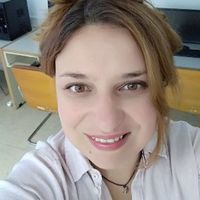
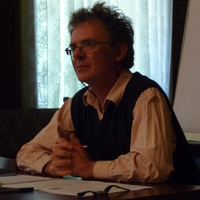


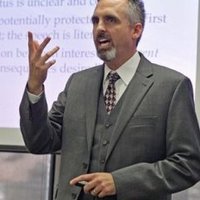
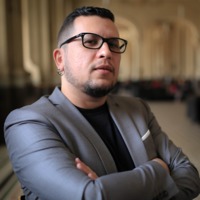
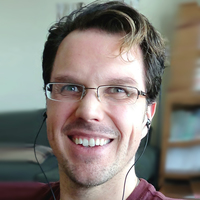


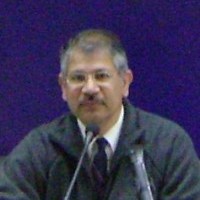

Uploads
Papers by Alexandra Nakou
οπτικοποίηση και η προώθηση των αιτημάτων τους στην τοπική αυτοδιοίκηση, θα οδηγήσουν τα παιδιά στη σταδιακή διαμόρφωση της έννοιας της κοινότητας οδηγώντας στη μεταμόρφωση της
τάξης από σύνολο ατόμων σε κοινότητα προσώπων. Η σχολική κοινότητα αναπτύσσεται και αλληλεπιδρά με συγκεκριμένα εργαλεία δημοκρατικού διαλόγου που τη βοηθούν να διεκδικεί και να διαμορφώνει μία νέα συλλογική ταυτότητα. Κατά την υλοποίηση αυτής της έρευνας- δράσης οι εκπαιδευτικοί προκειμένου να αξιολογήσουν τα αποτελέσματα αυτής, χρησιμοποιούν μία σειρά εργαλείων όπως: το ημερολόγιο της δράσης με σχόλια, παρατηρήσεις και καταγραφή
των δράσεων καθώς και το διάλογο και τη συζήτηση με τους μαθητές/τριες προκειμένου να καταγραφεί η οπτική τους. Συνοψίζοντας, θα λέγαμε πως η άσκηση των δημοκρατικών πρακτικών εξασφαλίζει την εσωτερίκευση εκείνων των αξιών και των συμπεριφορών που θα
καταστήσουν τα παιδιά τους αυριανούς ευσυνείδητους πολίτες.
δυνατοτήτων, παρουσία των Μέσων Μαζικής Επικοινωνίας στην
καθημερινότητα μας καθώς και ο σημαντικός ρόλος που αυτά έχουν
αναλάβει σε κάθε έκφρασή τους (διαδίκτυο, τηλεόραση, κινηματογράφος, Τύπος, ραδιόφωνο, περιοδικά, κ.ά.) αποτελεί φαινόμενο που απαιτεί την προσοχή των φορέων διαπαιδαγώγησης, ώστε να αξιοποιήσουν αυτόν τον δίαυλο επικοινωνίας ξεκινώντας από την παιδική ηλικία. Η ενασχόληση με τα προϊόντα των νέων μέσων, όπως παιχνίδι με διαφημίσεις, άρθρα, φωτογραφίες δημοσιογραφικών εντύπων ή ειδήσεων από blog και ιστοσελίδες αναπτύσσουν ανάμεσα στο παιχνίδι και στον γραμματισμό δυναμικές σχέσεις (Bessell- Brown 1985).
Σε αυτήν την εργασία θα αναλυθεί η πορεία ανάπτυξης ψηφιακής
σχολικής εφημερίδας με ομαδοσυνεργατικό τρόπο από παιδιά της Στ΄
Δημοτικού. Χρησιμοποιηθήκαν οι γνωστότερες υπηρεσίες του Web 2.0 όπως wiki, chat, αλλά και λογισμικό εννοιολογικής χαρτογράφησης σε συνδυασμό με παιγνιώδεις εφαρμογές σε flash, ώστε τα παιδιά να εξοικειωθούν με τα κοινωνικά δίκτυα, αλλά και να καλλιεργήσουν δεξιότητες ψηφιακού γραμματισμού.
ISBN: 978-960-99301-0-9
There were two key factors, common in all projects, which outline the chosen approach and contribute to the uniformity and concreteness of the conclusions: firstly, in all cases the intergenerational communication took place in an composite environment which offered online and offline interaction at the same place and time, and, secondly, all activities were designed in a way which promotes the idea that the elderly may not only benefit from ICT, but become active members of the new digital world and provide precious knowledge and experience in both local and global level.
During the first research project 14 year-old students acted as tutors of the members of a community centre teaching them basic aspects of internet use. One year later another project was held, bringing together adolescents and elderly people in order for them to co-create digital videos
based on the personal narrations of the elderly and implementation of the technical skills of the adolescents. As the elderly revealed their life experiences the students recorded them on video. They cooperated on the editing process and presented the final outcome to all participants. Social games and intergenerational learning was the main theme of the third workshop. High school students played the popular game “Frontier ville” with their elderly team-mates and participated in an on-line competition. A hands-on workshop was set whilst both generations grew their digital farm in the far-west. The fourth research project was called “Music for Two Generations”, and was based on the hypothesis that both sides would be interested in discussing their musical tastes. Students and seniors used “every-day” digital applications, under the guidance of the research group members, in order to create a youtube account where they composed a playlist with their favourite songs. A general conclusion deriving from these projects would be that people from different generations can work together and communicate in a well-organized digital context. Moreover, they can create valuable digital artifacts as a confirmation of their co-operation and interaction achieved.
οπτικοποίηση και η προώθηση των αιτημάτων τους στην τοπική αυτοδιοίκηση, θα οδηγήσουν τα παιδιά στη σταδιακή διαμόρφωση της έννοιας της κοινότητας οδηγώντας στη μεταμόρφωση της
τάξης από σύνολο ατόμων σε κοινότητα προσώπων. Η σχολική κοινότητα αναπτύσσεται και αλληλεπιδρά με συγκεκριμένα εργαλεία δημοκρατικού διαλόγου που τη βοηθούν να διεκδικεί και να διαμορφώνει μία νέα συλλογική ταυτότητα. Κατά την υλοποίηση αυτής της έρευνας- δράσης οι εκπαιδευτικοί προκειμένου να αξιολογήσουν τα αποτελέσματα αυτής, χρησιμοποιούν μία σειρά εργαλείων όπως: το ημερολόγιο της δράσης με σχόλια, παρατηρήσεις και καταγραφή
των δράσεων καθώς και το διάλογο και τη συζήτηση με τους μαθητές/τριες προκειμένου να καταγραφεί η οπτική τους. Συνοψίζοντας, θα λέγαμε πως η άσκηση των δημοκρατικών πρακτικών εξασφαλίζει την εσωτερίκευση εκείνων των αξιών και των συμπεριφορών που θα
καταστήσουν τα παιδιά τους αυριανούς ευσυνείδητους πολίτες.
δυνατοτήτων, παρουσία των Μέσων Μαζικής Επικοινωνίας στην
καθημερινότητα μας καθώς και ο σημαντικός ρόλος που αυτά έχουν
αναλάβει σε κάθε έκφρασή τους (διαδίκτυο, τηλεόραση, κινηματογράφος, Τύπος, ραδιόφωνο, περιοδικά, κ.ά.) αποτελεί φαινόμενο που απαιτεί την προσοχή των φορέων διαπαιδαγώγησης, ώστε να αξιοποιήσουν αυτόν τον δίαυλο επικοινωνίας ξεκινώντας από την παιδική ηλικία. Η ενασχόληση με τα προϊόντα των νέων μέσων, όπως παιχνίδι με διαφημίσεις, άρθρα, φωτογραφίες δημοσιογραφικών εντύπων ή ειδήσεων από blog και ιστοσελίδες αναπτύσσουν ανάμεσα στο παιχνίδι και στον γραμματισμό δυναμικές σχέσεις (Bessell- Brown 1985).
Σε αυτήν την εργασία θα αναλυθεί η πορεία ανάπτυξης ψηφιακής
σχολικής εφημερίδας με ομαδοσυνεργατικό τρόπο από παιδιά της Στ΄
Δημοτικού. Χρησιμοποιηθήκαν οι γνωστότερες υπηρεσίες του Web 2.0 όπως wiki, chat, αλλά και λογισμικό εννοιολογικής χαρτογράφησης σε συνδυασμό με παιγνιώδεις εφαρμογές σε flash, ώστε τα παιδιά να εξοικειωθούν με τα κοινωνικά δίκτυα, αλλά και να καλλιεργήσουν δεξιότητες ψηφιακού γραμματισμού.
ISBN: 978-960-99301-0-9
There were two key factors, common in all projects, which outline the chosen approach and contribute to the uniformity and concreteness of the conclusions: firstly, in all cases the intergenerational communication took place in an composite environment which offered online and offline interaction at the same place and time, and, secondly, all activities were designed in a way which promotes the idea that the elderly may not only benefit from ICT, but become active members of the new digital world and provide precious knowledge and experience in both local and global level.
During the first research project 14 year-old students acted as tutors of the members of a community centre teaching them basic aspects of internet use. One year later another project was held, bringing together adolescents and elderly people in order for them to co-create digital videos
based on the personal narrations of the elderly and implementation of the technical skills of the adolescents. As the elderly revealed their life experiences the students recorded them on video. They cooperated on the editing process and presented the final outcome to all participants. Social games and intergenerational learning was the main theme of the third workshop. High school students played the popular game “Frontier ville” with their elderly team-mates and participated in an on-line competition. A hands-on workshop was set whilst both generations grew their digital farm in the far-west. The fourth research project was called “Music for Two Generations”, and was based on the hypothesis that both sides would be interested in discussing their musical tastes. Students and seniors used “every-day” digital applications, under the guidance of the research group members, in order to create a youtube account where they composed a playlist with their favourite songs. A general conclusion deriving from these projects would be that people from different generations can work together and communicate in a well-organized digital context. Moreover, they can create valuable digital artifacts as a confirmation of their co-operation and interaction achieved.